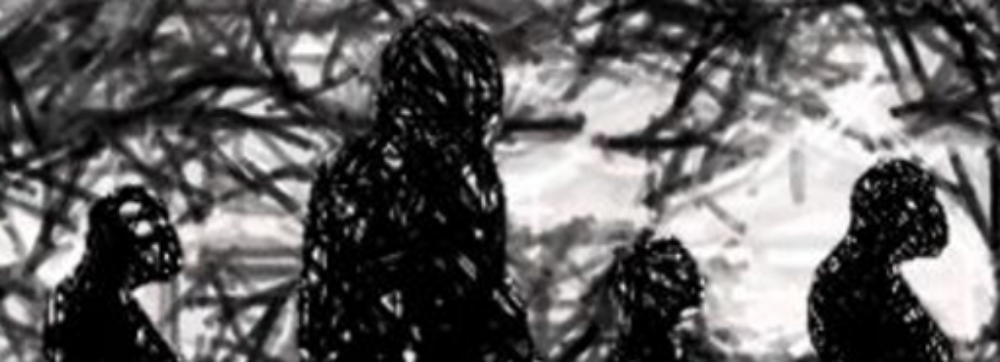Kristian Tylén, Riccardo Fusaroli, Sergio Rojo, Katrin Heimann, Nicolas Fay, Niels N. Johannsen, Feix Riede and Marlize Lombard
The evolution of human symbolic behaviour seems to continuously rewrite itself as new archaeological excavations challenge previous ages’ conceptions (McBrearty & Brooks, 2000). In parallel, experimental lab studies have shown great potential to test the plausibility of hypotheses about the potential underlying mechanisms of cultural evolution inaccessible to cross-sectional and anthropological approaches (Caldwell & Millen, 2008; Galantucci, 2009; Galantucci & Garrod, 2010). However, concerns could be raised if the two strains of investigation—archaeology and cognitive laboratory experiments—are sufficiently well connected. Here we attempt to bridge this epistemic gap by using archeological items directly as stimuli in experimental investigations.
Dating back as far as 100 ka, the South African Blombos ochre and the Diepkloof ostrich egg engravings are considered among the earliest fossilized evidence of human symbolic behavior (Henshilwood, d’Errico, & Watts, 2009; Hodgson, 2014; Texier et al., 2013). Of special interest is the temporal trajectory spanning more than 40 thousand years from earlier simpler parallel line patterns to later complex cross-hatchings (see figure 1A). In earlier experimental work (Tylén et al., 2020), we uncover indications that the structural changes of the patterns made them increasingly effective for their function as symbols.
In order to investigate if the particular evolutionary trajectory of the Blombos and Diepkloof engravings could be the product of a of cultural transmission process, we here present an transmission chain experiment utilizing the archaeological patterns a stimuli. Eight chains of eight generations reproduced patterns in a digitized experimental environment. We seeded each chain with stylized outlines of engraved patterns from the earliest period of the Blombos or Diepkloof collections (see figure 1B). After a brief presentation (3 s) of a pattern, the participant was instructed to reconstruct it from memory by placing and rotating lines using the computer mouse. The resulting figures were passed down as training stimulus for participants of the next generations etc. (Kirby & Hurford, 2002).
We then conducted five psychophysical experiments (the same as in Tylén et al., 2020) with new participants to investigate the cognitive implications of the development of resulting patterns with respect to their saliency, memorability, discriminability, intentionality and style.

We find that processes of cultural transmission indeed seem to induce structural changes with corresponding cognitive effects similar to the original archaeological engravings. In particular, the patterns became more salient, memorable and associated with human intent over generations resembling our original findings. However, we also observed differences in the experimental measures of, for instance, discriminability suggesting that other mechanisms besides individual learning motivating future experiments.
References
Caldwell, C. A., & Millen, A. E. (2008). Studying cumulative cultural evolution in the laboratory. Philosophical Transactions of the Royal Society B: Biological Sciences, 363(1509), 3529-3539. Retrieved from http://www.ncbi.nlm.nih.gov/pmc/articles/PMC2607341/pdf/rstb20080133.pdf
Galantucci, B. (2009). Experimental semiotics: a new approach for studying communication as a form of joint action. Topics in Cognitive Science, 1(2), 393-410.
Galantucci, B., & Garrod, S. (2010). Experimental semiotics: A new approach for studying the emergence and the evolution of human communication. Interaction Studies: Social Behaviour and Communication in Biological and Artificial Systems.
Henshilwood, C. S., d’Errico, F., & Watts, I. (2009). Engraved ochres from the middle stone age levels at Blombos Cave, South Africa. Journal of human evolution, 57(1), 27-47.
Hodgson, D. (2014). Decoding the Blombos engravings, shell beads and Diepkloof ostrich eggshell patterns. Cambridge Archaeological Journal, 24(01), 57-69.
Kirby, S., & Hurford, J. R. (2002). The emergence of linguistic structure: An overview of the iterated learning model. In Simulating the evolution of language (pp. 121-147): Springer.
McBrearty, S., & Brooks, A. S. (2000). The revolution that wasn’t: a new interpretation of the origin of modern human behavior. Journal of human evolution, 39(5), 453-563. doi:10.1006/jhev.2000.0435
Texier, P.-J., Porraz, G., Parkington, J., Rigaud, J.-P., Poggenpoel, C., & Tribolo, C. (2013). The context, form and significance of the MSA engraved ostrich eggshell collection from Diepkloof Rock Shelter, Western Cape, South Africa. Journal of Archaeological Science, 40(9), 3412-3431.
Tylén, K., Fusaroli, R., Rojo, S., Heimann, K., Fay, N., Johannsen, N. N., . . . Lombard, M. (2020). The evolution of early symbolic behavior in Homo sapiens. Proceedings of the National Academy of Sciences, 117(9), 4578-4584.
